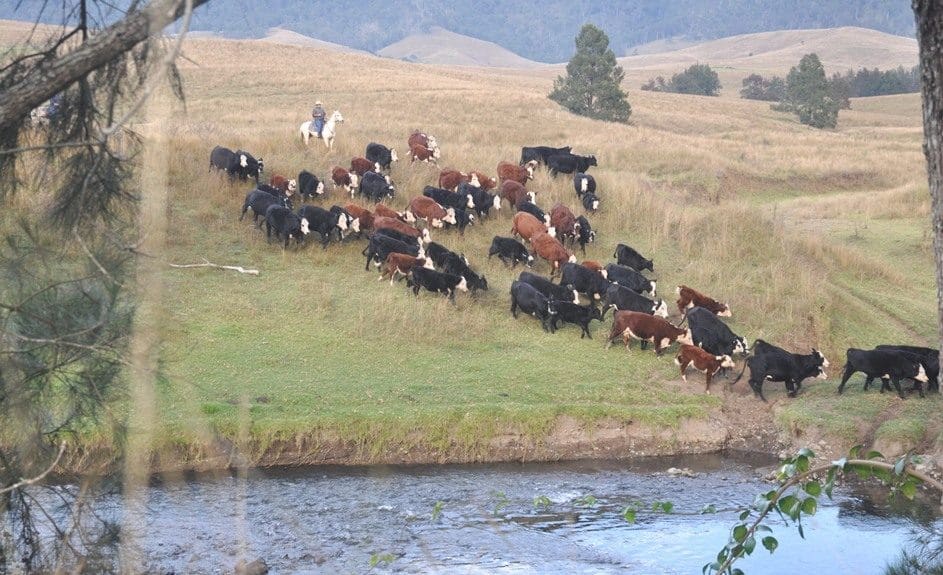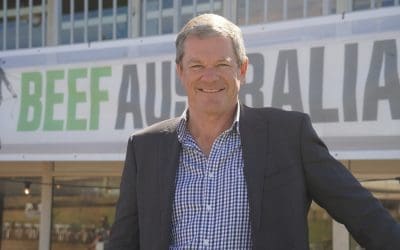
Rifa bought the 22,550ha Cooplacurripa Station, between Gloucester and Nowendoc in northern NSW, with 8000 head of cattle for $32m in 2015, selling it bare in November for $35m.
PROPERTY industry experts continue to challenge the methodology used by the Federal Government to build its annual register of foreign ownership of agricultural land.
The land register was established in 2015 to provide greater transparency about the level of overseas investment in Australia’s farmland.
According to the latest report issued last week for the period to June 2021, Australia has 377 million hectares of agricultural land and of that, 14 percent, or 53 million hectares, has some level of ‘foreign’ ownership – either outright, or under majority or minority shareholding.
Around 83pc, or 45 million hectares, is held on a leasehold basis and 85pc, or 45m ha, is used for livestock.
When last year’s report was released, Bruce Gunning from Ray White Rural International criticised the analysis as misleading, saying the figures refer to scale – not output.
“An investor can purchase large tracts of country very cheaply on a per hectare basis, but what is the value of the investment?” he asked.
David Goodfellow, the head of CBRE Agribusiness, agrees.

CBRE Agribusiness managing director David Goodfellow
He said there were no surprises in the latest figures and urged the ATO to use a different metric.
“Instead of comparing the total hectares owned by various foreign countries or origins, the percentage of cattle owned should be analysed.”
Mr Goodfellow said the number of hectares owned by foreigners was skewed when China’s Shanghai Cred partnered with Gina Rinehart to purchase S. Kidman & Co in 2016.
The joint venture created a massive pastoral empire spanning 11.94m ha, however much of Kidman is low carrying capacity country which means its revenue contribution is low.
In 2020-2021, China was crowned in FIRB’s annual report as the largest foreign owner of Australian agricultural land for the third consecutive year.
Mr Goodfellow said the finding comes as no surprise because the Chinese own an enormous amount of country.
“The question is how many cattle do they own, and do they have a huge influence over the Australian cattle market? The ATO should analyse the investment in dollars terms and the investment per industry sector.”
Largest foreign owner
After years of declining investment by China, the United Kingdom is poised to again become the largest foreign owner of Australian agricultural land.
While China retains the title for the third consecutive year, it hangs on by a thread.
China holds a 2.3 percent share or 8,499,000ha (830,000ha freehold and 7,669,000ha leasehold), closely followed by the United Kingdom with 2.2 percent or 8,251,00ha (886,000ha freehold and 7,365,000ha leasehold).
Since June 2021 (the deadline for the latest FIRB report), Chinese investors have divested a number of Australian holdings.
In November, Rifa Salutary sold the last of its grazing assets – the renowned 24,000ha cattle breeding property Cooplacurripa Station in northern New South Wales for $35 million ($1458/ha) bare.
In January, Shenhua Watermark Coal offloaded a massive north-west New South Wales portfolio of land to 12 local farming families and a corporate institution in a deal worth around $120 million.
And last month, Shandong Ruyi (Ruyi) sold its 51pc stake in 93,700ha Cubbie Station (the largest irrigation property in the southern hemisphere, near Dirranbandi in south west Queensland) to the Macquarie Infrastructure and Real Assets (MIRA) fund (owned by Australian investment firm Macquarie Group) taking its total ownership to 100pc.
These, and other recent sales clearly demonstrate that investment from China is slowing down, if not reversing, and even though there has been little new investment by the UK, the gap between the two foreign entities is closing.
In the meantime, the United States is edging its way up the ranks, slightly increasing its share from 0.7pc (2,751,000ha) in 2020 to 0.8 pc (2,926,000ha) in 2021 – a 175,000ha increase.
The Netherlands continues to hold a 0.7pc share (2,817,000ha), closely followed by Canada (2,451,000ha), Bahamas (2,021,000ha), Switzerland (2,149,000ha) and Germany (2,144,000ha) – each with 0.6 pc stake.
Joint ventures
Of the 14 percent or 53 million hectares of Australian agricultural land that are foreign owned, 39.4m ha is wholly owned by foreigners, and the remaining 13.6m ha is shared with Australian owners.

Mark Barber
Mark Barber, the head of agribusiness investment services at Elders, urged readers to look beyond the headlines of the latest findings and scrutinise the detail.
“It is misleading to say that foreigners own 14 percent or 53m ha. A significant portion is pastoral leasehold which is large in land size, but small in terms of output,” he said.
Mr Barber said of that 53m ha, 13.6m ha was held by co-investors, which tended to be overlooked.
“Foreign ownership is backing some high performing Australian operations,” he said.
One of the most obvious examples is the partnership between Hewitt Australia and Canada’s Public Sector Pension Investment Board. However, there are many other joint ventures.
Mr Barber said the model was attracting increasing interest and should be embraced and encouraged.
“Foreign capital wants exposure to agricultural land, and in particular agricultural land in Australia. It recognises our agricultural output and quality of management, and as a result, is seeking partnerships.”
While Chinese interests are significant, Mr Barber said there were many market players from a wide range of jurisdictions investing in Australia.
“The United States owns almost 3m ha of agricultural land (comprising 1,371,000ha freehold land and 1,555,000ha leasehold land). By comparison, the vast majority of Chinese holdings are leasehold (around 7.67m ha) with just 830,000ha freehold.”
Mr Barber said there had been a maturing of the Australian agricultural market over the last 10 to 15 years largely due to the competitiveness of Australian producers in the rural property market.
“They have plenty of cash and are experiencing good seasons and commodity prices. Farm management deposits are sitting at around $5.5b to $6b, giving producers the firepower to compete strongly in the market.”
“Producers have very strong balance sheets, a low cost of capital, the expertise to run high performing assets and the ability to extract the maximum value from them,” Mr Barber said.
This maturity was likely to enhance the diversity of inbound capital.
“Liquidity has increased and so too has the level of interest. When large scale assets come to the market, there is a larger pool of interested buyers who can acquire those holdings as a going concern and complete the deal in a timely fashion.”
Rural property numbers
It is interesting to note that the number of rural properties owned by foreigners rose slightly from 9897 in 2020 to 10,284 in 2021.
More than 2500 (spanning 2,674,000ha) are located in New South Wales and the ACT, followed by 2187 (669,000ha) in Victoria, 1693 (15,648,000ha) in Queensland, 1564 (14,394,000ha) in Western Australia, 1344 (401,000ha) in Tasmania, 815 (4,925,000ha) in South Australia and 101 (14,274,000ha) in the Northern Territory.
More than a quarter (26.5pc) of agricultural land in the Northern Territory is foreign owned, closely followed by Tasmania (25.5pc). In Western Australia 16.9pc is foreign owned, Queensland 12.2pc, South Australia 10.9pc, Victoria 5.9pc and New South Wales and the ACT 5.2pc.
More on the register of foreign ownership of agricultural land after Easter.
